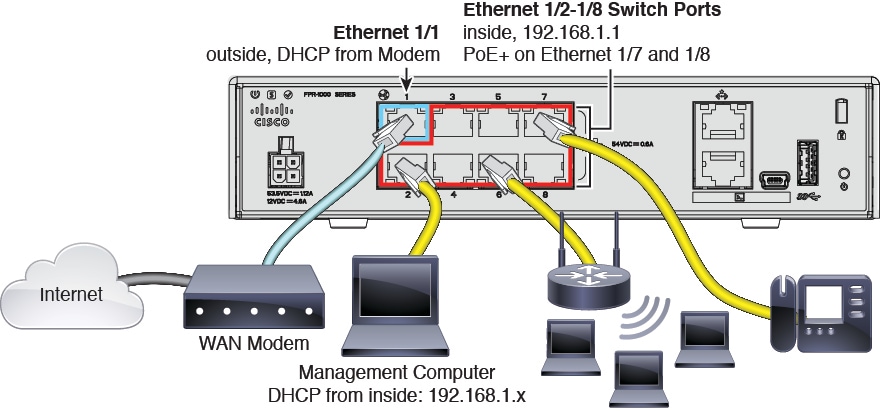

I’m going to do this manually in a minute, so we can skip this > Next. I’ll accept the defaults here, be advised those NTP servers may take a little while to ‘ go-green’ (you will see what I mean later) > Next. Here I’m accepting the default Outside/Public Interface settings of DHCP enabled, with IPv6 disabled, if yours has a static IP, or you want to user IPv6 then change the settings accordingly > Next. Set yourself up a free Smart License Account, and generate a token, copy it to the clipboard, (we will need it in a minute).Ĭonnect to the firewall via a LAN port on, or via the Management port on (unless you have ran though the FTD setup at command line, and have already changed the management IP).ĭefault usernames, (you will be asked to change them) are Smart Licensing: If you’re not already familiar with Cisco Smart Licensing, I’ve covered it in more depth here. I will be deploying this as a stand alone FTD firewall, that will be managed locally on the device itself via FDM (Firepower Device Manager) and not via an FMC (Firepower Management Center) appliance. Note: When all lights are solid the firewall is operational, when the centre light is blinking, it’s still booting). Status Lights, (another reason not to put things on top of it!) Though you will notice there’s some on the back also.Reset Button: Depress for 3 seconds reverts the firewall to its factory settings, (and preserves the config apparently).Kensington Lock: Seriously? I’ve not seen one of these since about 2005, does anyone still use them?.USB Port (useful for upgrades, and backups).8 x Gigabit Ethernet ports: Normally GigabitEthernet 1/1 will be for the WAN, GigabitEthernet 1/2 though 1/8 will be for the LAN (with 1/7 and 1/8 being PoE).DHCP Scopes on both the inside and management interfaces (192.168.1.x and 192.168.45.x respectively).Management IP address 192.168.45.1 on the Management Interface.Outside IP Address set to DHCP in interface 1.

Inside IP address (VLAN 1) 192.168.1.1 (on all interfaces from 2 to 8).On its factory defaults, the unit will have the following settings. If you’re here you’ve either purchased a new Cisco Firepower device running FTD (FirePower Threat Defence) or have re-imaged your Firepower device from ASA to FTD code.


 0 kommentar(er)
0 kommentar(er)
